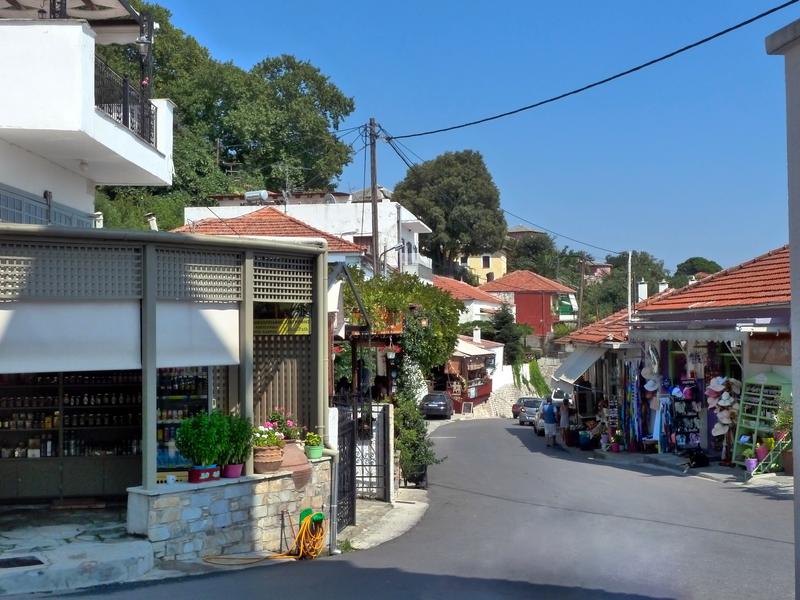Milies
One of the most popular destinations of Pelion is Milies, 28 kilometers away from Volos to the southeast. This incredibly beautiful village is built on a densely vegetated slope of the Centaurs Mountain and its altitude varies from 250 meters, near the train station, to 450 meters at its highest point.
Milies is an old main village with a long history. It is believed that its founders were inhabitants of Milies in Evia, who left their village to survive pirates’ raids. Therefore, for concealment purposes, the village was built in such a secluded spot.
It was homeland of 3 of the greatest figures of the Modern Greek Enlightenment, Anthimos Gazis, Grigorios Konstantas and Daniel Filippides, and therefore it played a significant role in the history of Magnesia and the Greek nation in general. The “School of Milies” or “Psyches Achos” (Treatment of the Soul) as it was named by its founders, was an important intellectual home of the time and springboard of the struggle for freedom of the 1821 revolution.
The image of village is enchanting all year long. The authentic architectural style of Pelion as represented by Milies turns the village into a “landmark” of the mountain. The central square is a hallmark that during spring and summer looms beneath the big plane trees, during fall it is covered with fallen leaves and during winter it turns white covered with snow. Almost all the stores of the village are located around the square: traditional taverns, quaint cafes, little souvenir stores, folk art and retail stores. The village’s manors have been turned into guest houses offering a unique experience. It is abundant with places of interest that you must visit.



In the central square there is the church of Pammeghistoi Taxiarhes. The date of its construction is not known; we know, however, that it was renovated in 1741. Being that Greece was under the rule of the Ottoman Turks, the church was made in such a way, so the exterior doesn’t give away the building’s actual purpose. Even though there were no symbols or signs of church architecture or a belfry, its interior is full of exceptional icons and wooden sculptures. It is also known for its excellent acoustics.
Located opposite the church is the library of Milies with a wide selection of over 3,500 books and rare writings, heirlooms, documents from the Greek Revolution and administrative documents of the School of Milies. The foundation statute of the School and the banner of the revolution, which was raised by Anthimos Gazis in 1821 signifying the uprising against the Turkish occupation, have a prominent position.

Nearby, the Folklore Museum, lodged in the city hall’s building, was founded in 1982 and offers a collection of folklore art. Also, retained there are the original icons of the famous folk painter Theophilos, which decorated the little church of Saint Marina until about 20 years ago.
The central square is a starting point of cobblestone streets that connect it with all the neighborhoods of the village and are ideal for walks. Following the uphill street next to the Library you will see Saint Nikolaos church that overlooks the village, western Pelion and the Pagasetic Gulf. The upper side of the square is the starting point for a stone street that turns into a trail, reaching Tsagarada village, while the street on the lower side leads to the train station area and to Kala Nera village.
Milies is surrounded by numerous little country churches; the most famous are Aghia Triada, Saint Athanasios Athonitis, Saint Haralampos and Saint Paraskevi. If you get thirsty on your way there, you can quench your thirst at the traditional fountains found scattered throughout the village.

A must-see is the verdant district of Milies Train Station, terminal station for the little train of Pelion. Legendary “Moutzouris” (Smudgy), which connected Milies with Volos since 1903 through a historic rail, was constructed by the Italian engineer Evaristo de Chirico. Now, the little train starts from Ano Lehonia village with destination Milies, April through October. The route through Pelion’s wilderness, overlooking the Pagasetic Gulf on one of the world’s narrowest railroad lines will fascinate you.
Also, at the Station district there is a traditional guesthouse, the ruins of an old windmill, and a World War II memorial of people executed by the Germans in 1943. A little further lies the impressive metal de Chirico bridge, which connects the two mountain slopes offering an incredible view to the sea. Lastly, during summer in the village there are festivities and events. “Filippidia” is a series of cultural events organized by the Cultural Center in memoriam Daniel Filippides, a great Greek teacher from Milies. Saint Paraskevi’s festival takes place between July 25th and July 27th. In mid-August at “A Night from Milies” you can enjoy traditional music and dance, and at the end of the month the village bursts with life because of “The Pear Festival”.
